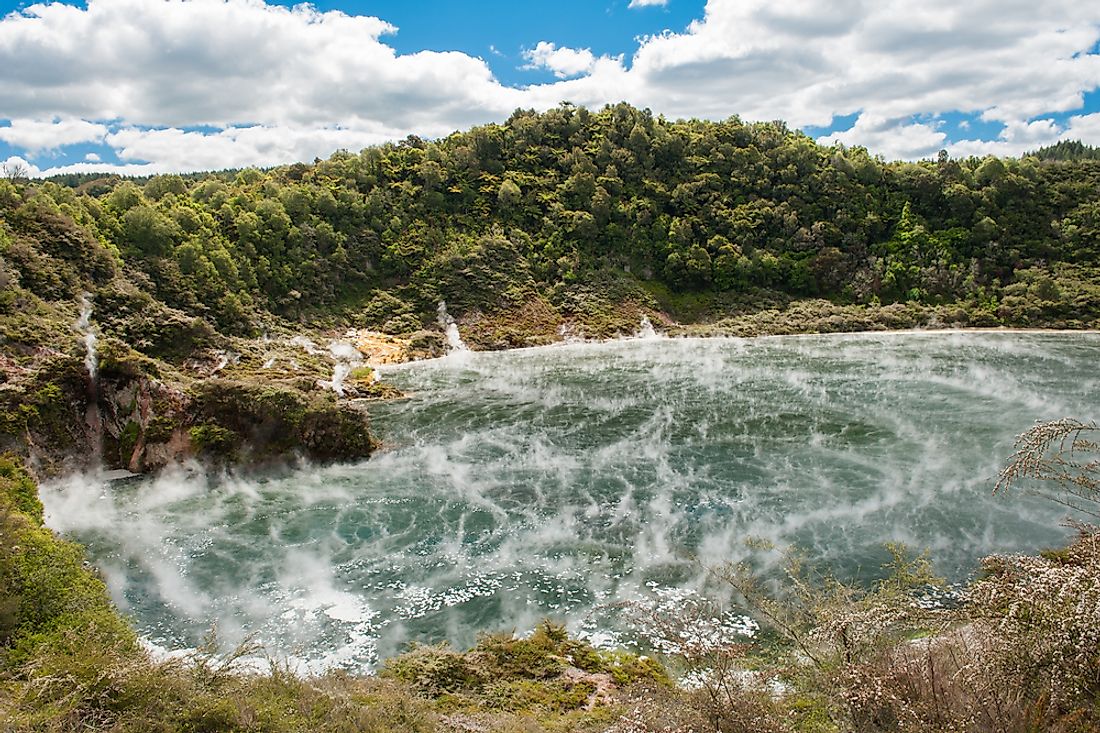Where Is the World's Largest Geothermal Pool?

Geothermal pools, also known as hot lakes, are found in most countries and on all the continents of the world including Antarctica. A geothermal pool is formed when the underground water is geothermally heated and caused to rise from the Earth’s crust on to the surface. Some of these pools contain relatively warm water that is safe for bathing while others are very hot that they can easily cause burns or even deaths. Geothermal pools are home to diverse unique species that cannot be found anywhere else in the world. Frying Pan Lake in New Zealand is the world's largest geothermic pool.
World’s Largest Hot Lake
Some sources have claimed that the Boiling Lake in Dominica is the largest geothermal pool in the world while others have always referred to Grand Prismatic Spring in the United States as the largest. Although the two hot lakes are significantly large, the largest geothermal pool in the world is the Frying Pan Lake in New Zealand.
Just like the name suggests, Frying Pan Lake is too hot to handle, with the waters averaging 120 degrees Fahrenheit. It covers an area of approximately 38,000 square meters and is only 18 feet deep at the shallow end and 60 feet deep at the deep end. This lake is fed by several acidic springs. The water of the lake is always steaming and sometimes appear as boiling because of the hydrogen sulfide and carbon dioxide gas which bubble to the surface.
Location of Frying Pan Lake
Frying Pan Lake is located in New Zealand’s Northern Island in Echo Crater of the Waimangu Volcanic Rift Valley. Waimangu Volcanic Rift Valley encompasses Waimangu Geyser, Lake Rotomahana, and the location of Pink and White Terrence. The term “Waimangu” is a Maori word which means “black water” in reference to the black water that was thrown up by the Waimangu Geyser.
Formation of the Frying Pan Lake
In 1886, the Rotorua area of New Zealand and Mount Tarawera were rocked with an earthquake in what remains the country’s largest volcanic eruption. The Echo Crater was formed in the process. The craters formed stretched from Mount Tarawera to the Southern Crater. After the eruption, the craters were partly filled with rainwater and heated groundwater. The eruption also led to the destruction of villages, loss of lives and animals, and the disappearance of the famous Pink and White Terraces. A larger eruption on the Echo Crater in April 1917 resulted into a larger crater which was filled up with hot water to reach the current size of the Frying Pan Lake in 1918.
Unique Feature of the Frying Pan Lake
The Frying Pan Lake and the neighboring Inferno Crater Lake are interconnected by a unique cyclic nature of the hydrothermal system. The overflow volume and water levels of both lakes have formed a complex rhythm that repeats itself every 38 days. When the temperature and water levels of the Inferno Crater Lake decreases, the outflow and water levels of the Frying Pan Lake increases. The unique feature of the lake has been a subject of study since 1970.











